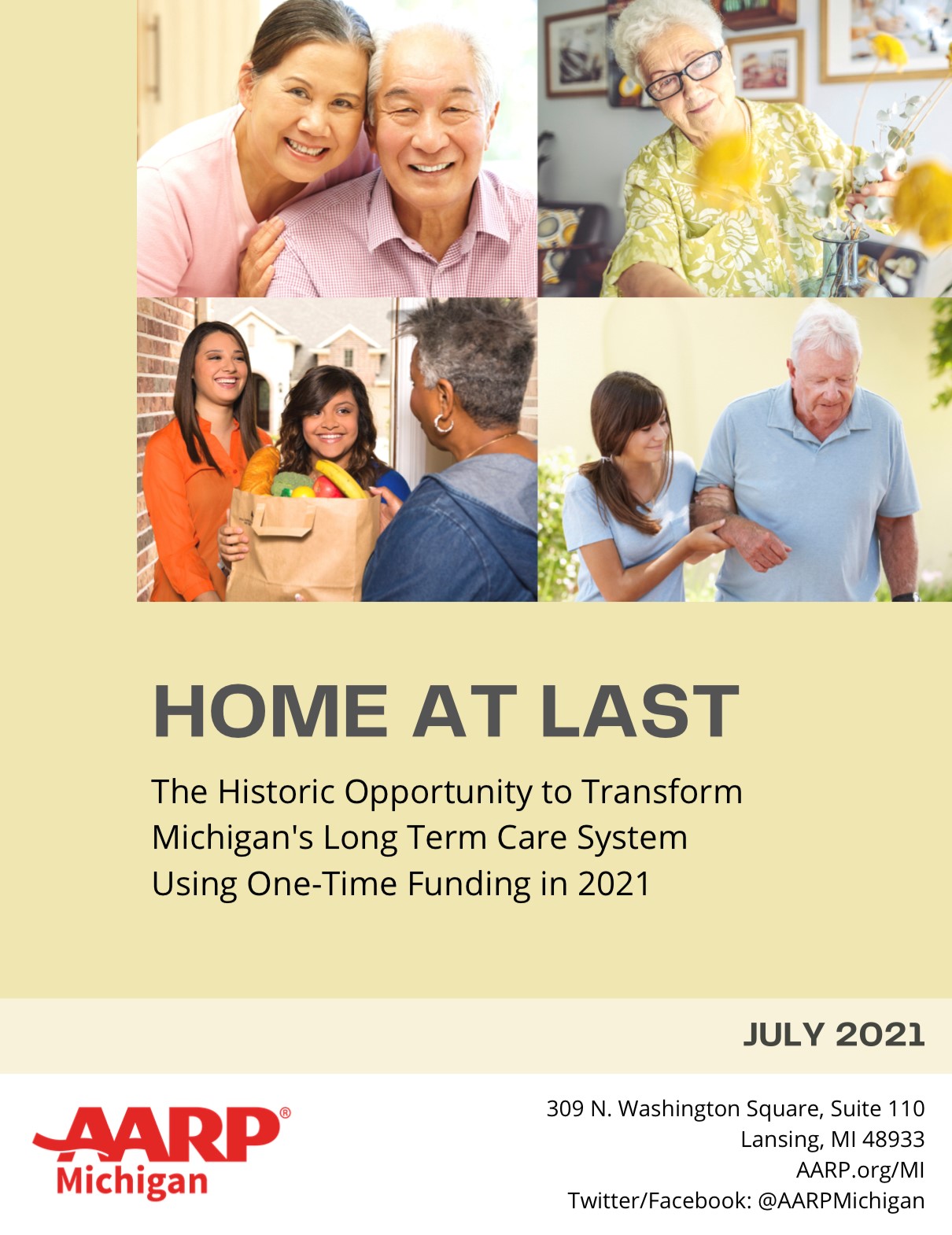AARP Hearing Center

By Lisa Cooper, AARP Michigan Manager of Advocacy
AARP Michigan has unveiled a new white paper entitled Home at Last: The Historic Opportunity to Transform Michigan’s Long Term Care System Using One-Time Funding in 2021.
Thanks to the availability of federal dollars available through 2024, opportunities exist for the state to improve safety, better align the supply and demand for services, and make more cost-effective use of the taxpayer dollars spent on long term care.
The white paper notes the state's long term care system is in urgent need of transformation, as the COVID-19 pandemic tragically demonstrated.
See the entire document HERE.
The one-time federal funds could allow Michigan to achieve two big policy goals that have long eluded the state:
- “Rebalancing” the state’s long term care system to allow the majority of Michigan residents to age in place in home and community-based settings, rather than in nursing homes, and
- Improving the quality and safety of care provided by nursing homes for individuals who remain in that setting.
Over the past decade, Michigan policymakers have pursued and achieved incremental progress toward rebalancing through the annual state appropriations process, and AARP applauds those efforts. However, persistent waiting lists remain for home and community based care, and comparisons with other states show that Michigan can do better.
The pandemic also demonstrated the pressing need for reforms beyond rebalancing, to improve how services are delivered across the continuum of care, including in nursing homes.
This paper offers policymakers five recommendations for using currently available one-time funds to achieve these goals based on best practices already implemented in other states:
- Creating statewide HCBS presumptive eligibility
- Expanding assisted/independent senior housing with coordinated supportive services
- Providing HCBS start-up, expansion and innovation funding
- Incentivizing small-house nursing homes (the Green House model)
- Converting traditional nursing homes to 100% single occupancy rooms.
Each of these proposals would incentivize needed structural changes in ways that will make a difference for both the short- and long-term without creating additional funding obligations for taxpayers when the one-time funds run out.
Investing one-time funds as described in this paper could help our state overcome key challenges in our long term care system that have kept the state locked in a decades-long cycle of spending taxpayer dollars for care in settings that are both more expensive than alternatives, and not what Michigan residents want for themselves and their families.
AARP looks forward to working with policymakers to further explore, evaluate and implement these proposals to improve quality of life for every Michigander as we age, profoundly and for years to come.































































